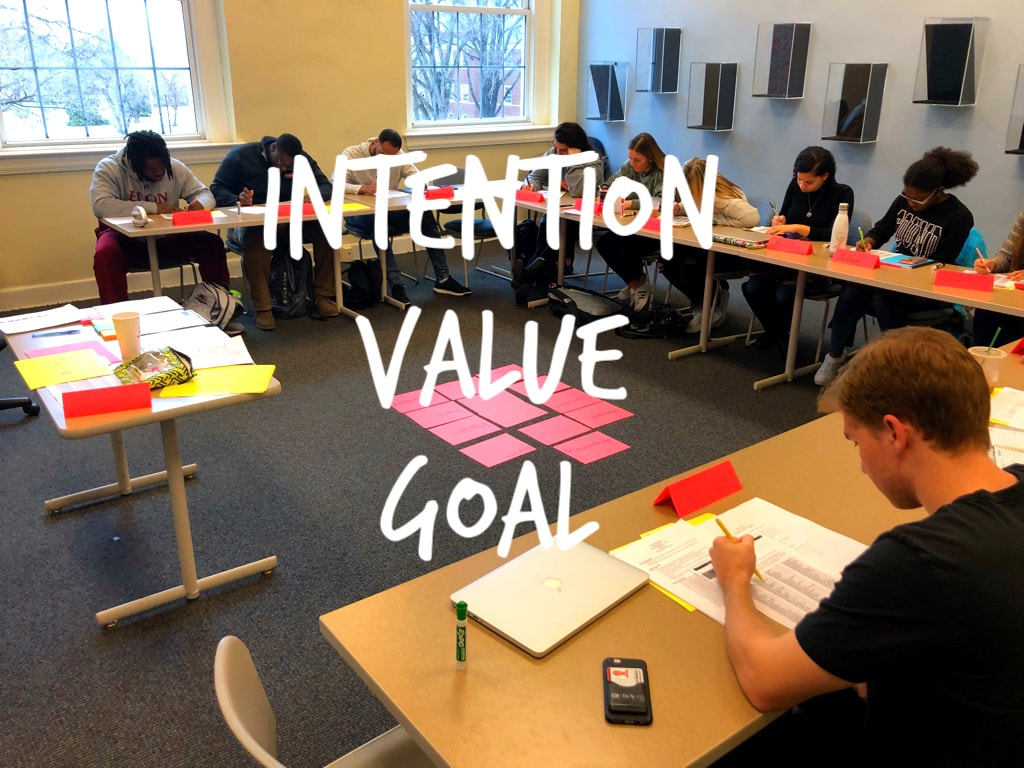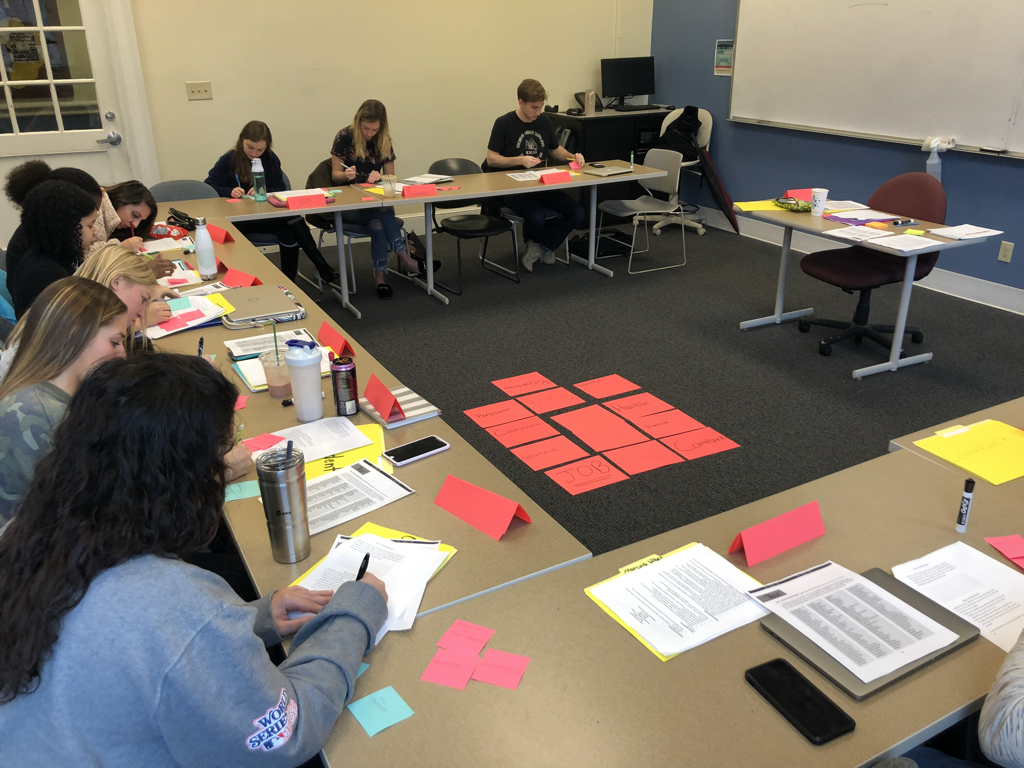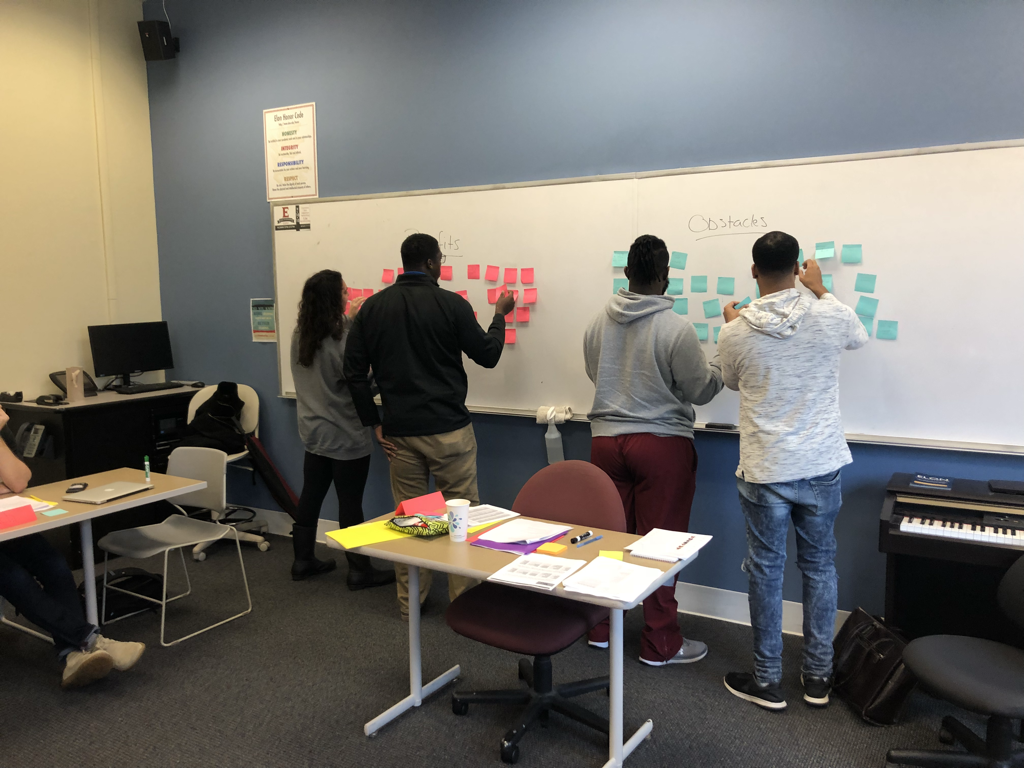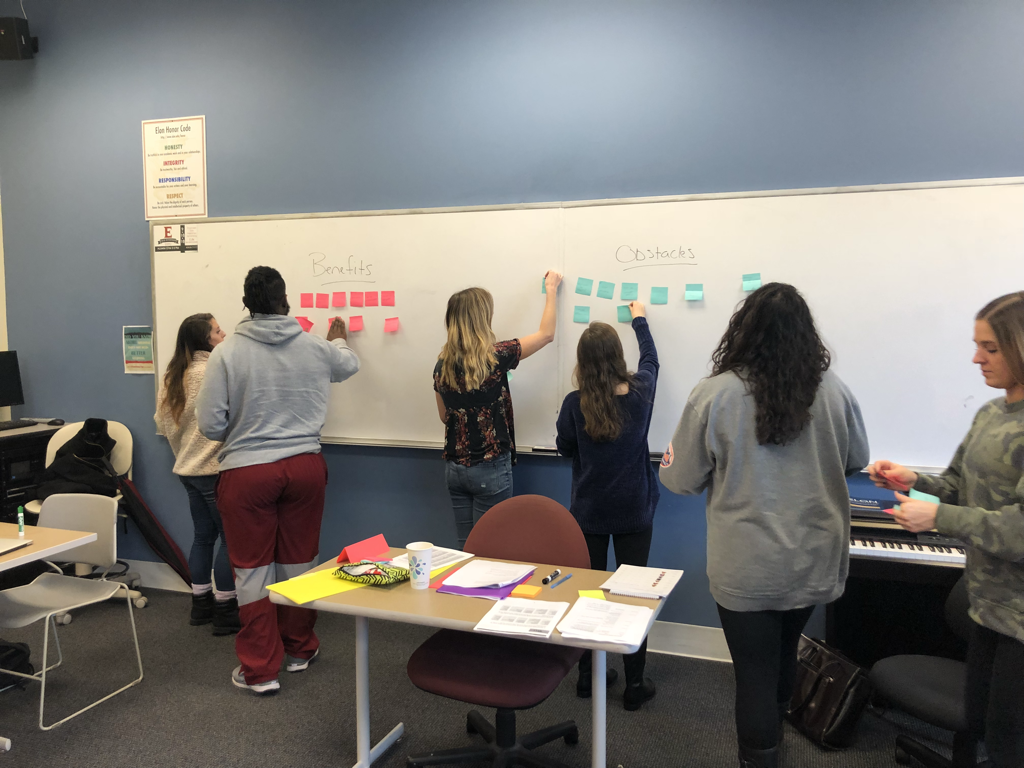Friendly Light
|
A Light with a Goal As we step into 2019, we see flashes of individuals’ goals and dreams revolving in our social media feed. There are words of intention for the New Year to lists of the past year’s experiences. We aspire for what 2019 will bring. For the winter term semester at my university I am teaching a self-reflective career course for three weeks. The first day students developed a word of intention for the year, selected five of their top values and brainstormed the benefits and obstacles of creating a goal. Merriam Webster dictionary defines a goal as, “the end toward which effort is directed.” For our class students will gear their assignments toward accomplishing a career related goal. The students in the course are juniors and seniors. Students will create a goal for acquiring a job, applying for an internship or submitting a graduate school application. Before jumping right in towriting a goal, I had the students spend time developing a word of intention for 2019. Each student wrote out the word on a sheet of paper and then shared with the entire class what the word meant to them, we then placed all of our words in the center of the floor so that we could see them the entire class. Next, the students completed a values exercise. The students read approximately 75 words and through a three step-process, students identified five values. Once students identified their values, a few selected to share aloud what the value meant to them individually. It was time to begin developing a goal – not any old goal that comes to mind and we slop it on the paper but a S (specific) M (Meaningful) A (Adaptive) R (Realistic) and T (Time-framed) goal. To give the students an example I shared a research project that I am currently working on with a colleague and I outlined each element. My colleague and I are interviewing women about their professional trajectory in the campus recreation field. Specific – My colleague and I will write a journal article for our research study titled, "Passage through the Leadership Labyrinth: Women’s Journey in the Collegiate Recreation Profession.” Meaningful – Aligns with my value’s of education, service and leadership. Adaptive – This will improve my knowledge about our topic as well as create opportunities to share our findings in a variety of outlets (conference presentations, invited speaking engagements, or consulting) Realistic – We received funding for our research initiatives and have an opportunity to attend a qualitative writing retreat. Time-framed – We have a time line outlined for completing data analysis, writing our article to submit by August 1, 2019. There are variations of SMART goals. For class we used Dr. Russ Harris’s free resources located on the Happiness Trap website. We used the Reality Slap – Appendix 4 – Goal Setting resource. Students started to consider their goal and with only twenty minutes left of class it seemed a bit rushed. I brought the students back together as a whole and we engaged in a post-it activity where the students identified benefits and obstacles of goal setting. I asked students to write one word or a short phrase to describe obstacles and benefits of goal setting. Here is what the students identified: Obstacles Time Management Unrealistic Timeline Not Enough Time Uncomfortable Out of Comfort Zone Unknown Discouraged Outside Influences Not Attainable Too Narrow or Too Broad Fear of Not Achieving Difficult to Complete Redirecting Might Take More Than You Thought Stagnate Difficult to Stick to Anxiety to Reach Goal Scared Insecurity Unequipped Stressful Limiting Closed minded Hard Work May Change Based on Situations Naive Benefits Identify Specific Steps Direction Organization Vision Reminder Encourage Responsibility Something to Work Toward Monitor Growth Clear and Written Path Growth Motivation Peace of Mind Accountability Strive to Complete Dedication Proactive Personal We discussed how fantasizing about achieving your goal can actually be detrimental and reduce the chances of actually following through. We shared possible internal difficulties (self-doubt, anxiety) and external difficulties (lack of skills, personal conflicts with others) that might stand in our way of achieving our goal. We must acknowledge the various turns we experience as we are working toward a goal.
I informed the students that I would give them the weekend to reflect on our discussion and to develop their goal for our three weeks together. The students will return on Monday to make a commitment to the group by reading their SMART goal aloud to the class. By making a public commitment, we are more likely to follow through. For 2019, consider the following questions:
“A goal should scare you a little and excite you A LOT.” – Joe Vitale
0 Comments
Leave a Reply. |
|
Proudly powered by Weebly



